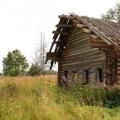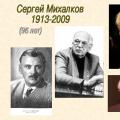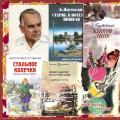Old photographs of the Yauza hospital. Execution lists of the Yauza hospital
I suddenly wandered into the hospital yard with a camera...
He built the estate on Yauzskaya Street in 1798–1802. serf architect M.P. Kiselnikov according to a project attributed to S. De Valli, and V. Bazhenov, and, finally, R.R. Kazakov (Church of Martin the Confessor, Church of Varvara on Varvarka, individual buildings of the Kuzminki estate).

It all starts, of course, with the main gate and pylons with smiling lions.

The lions refused to pose, I had to take one from another walk:P

Main house. The estate was built on a Russian scale.
The owner is a major industrialist Ivan Rodionovich Batashev, the owner of the iron smelting plants in Vyksa, where, by the way, the cast iron sculptures of the Moscow Arc de Triomphe and parts of the Moscow water fountains were cast.

Details of the main facade.

In 1812, when Napoleon’s army entered Moscow, Marshal Joachim Murat set up his residence in the house abandoned by the owner. Probably thanks to this, although the estate was badly damaged, it survived the fire that destroyed the entire surrounding area.

After the death of I.R. Batashev in 1820, all the property along with the estate went to his granddaughter Daria Ivanovna (married to Shepeleva, her husband was a hero of the Patriotic War of 1812, General D.D. Shepelev).
Then the estate was owned by the Shepelevs’ daughter, Anna, with her husband, Prince L.G. Golitsyn, and after their death (A.D. in 1861, L.G. in 1871), the estate was bought by the city and in 1878 Yauzskaya was opened there hospital for laborers (later simply Yauzskaya hospital).
In 1924-25 the institution became known as the Hospital named after. Union "Vsemedicsantrud", then Hospital named after. Medsantrud Union, and now it is City Clinical Hospital No. 23 named after. Medsantruda.

South side of the Main House. In the center you can see a fragment of a gallery stretching from the main house to the southern wing.

Southern wing.

Rear facade of the Main House.

The courtyard of the estate hangs over the courtyard of the Church of Simeon the Stylite (it is not known exactly, but perhaps also R.R. Kazakov). They say that soon after construction the church collapsed and was restored at the expense of Batashev.

MORGUE. Former outbuildings.

North side. On the left is the former northern entrance, on the right is the hospital church in honor of the icon of the Mother of God “Joy of All Who Sorrow,” built in 1898-1899 by architect N.V. Rozov.
The porch was probably dismantled during the construction of the temple. The entrance is sealed.

Facade of the northern entrance.

Details.



Surgical building. Added to the Main House in 1911. Architect Z. I. Ivanov.

Garden with a picturesque wall

Window on the apse of the hospital church with a grille in the form of a cross.

The main facade of the hospital church.

View of the hospital temple and the Main House from the northwest.
And two views of the northern wing.

From the niche there was also a gallery leading to the main house.

Northern wing. Last shot :)
Not far from the Taganskaya metro station there is a large old and perfectly preserved house that holds many mysteries. If you walk in those parts, be sure to enter the territory to touch the cultural monument of the late 17th - early 18th centuries. The history of the building is very unusual, as is the history of its owners, the Batashev family. Stories about this place are intertwined with legends.
2. The famous Russian industrialist Ivan Rodionovich Batashev could afford almost everything. Its ironworks cast fences for the Summer Garden and cannons for the Russian army. Of course, when he decided to build a house in Moscow, he chose one of the largest and most prestigious plots, and the construction itself was carried out on a grand scale on a plot of as much as three hectares. 
3. After the death of Ivan Batashev, his granddaughter Daria, who married the handsome man and hero of the War of 1812 Dmitry Shepelev, became a rich heiress. Shepelev knew a lot about military affairs, but was neither an industrialist nor an entrepreneur. Daria Shepeleva dies during childbirth, Ivan Batashev's line is interrupted. The fortunes of the Shepelev family are falling, the estate is transferred to the city for the organization of the Yauza hospital here. Since 1866, doctors have been in charge of the estate. 
4. A little information about the estate. In fact, there is still no consensus on the authorship of the project and the features of creating the estate. 
5. The Batashevs were progressive people. They sent their best serf masters to study abroad. The details of the estates are striking in their meticulousness and preservation. They built it conscientiously back then. 
6. In addition to the main house, two outbuildings, outbuildings, part of the wall, and a garden have been preserved. All this can be viewed; admission to the hospital territory is free. 
7. The estate was surrounded by a serious wall, built like a fortress. They say that the Batashevs even had their own troops. Why were such walls needed in the capital? And the numerous armed troops also raise questions. Suppress uprisings? Robbery in the forests? 
8. The manor building contains many interesting features. Ivan Rodionovich Batashev was a fan of the arts; in Vyksa he even built an opera house, one of the best in the country. The manor has a large balcony, which may have been created for viewing theatrical performances and concerts. 
9. Pay attention to the original decor of the estate. It's hard to believe that this is the work of serfs. 
10. During the War of 1812, the estate was badly damaged and was looted. Batashev spent 300,000 silver rubles on its restoration, which was a lot of money back then. 
11. After the revolution, the former estate, which became a hospital, did not formally change its purpose; the “hospital named after Medsantrud” was organized here. In the 1920s, the GPU ruled here. Executions and burials were carried out on the territory of the estate; in total, more than a thousand people were shot here. In their memory, a stone was erected with the names of those who could be identified. 
12. It is clear that mostly young people were shot. The peak of repression occurred between 1921 and 1926.
There are still legends that ghosts roam the estate. 
13. Near the manor house there is an unusual church. I think it's worth going there separately. 
14. Over the years, the main building has been rebuilt several times to suit the needs of the hospital, but the general features have been retained. I haven’t been inside, but they write that some of the details and interiors have been preserved. 
15. Not everyone can leave the estate. I wonder how old this sign is? 
16. We leave the territory of the estate. It was interesting to learn another of the many pages of the history of the capital and learn about the Batashev family. 
Later in my magazine I will tell you more about the Batashevs, in whose footsteps we went to the Ryazan and Nizhny Novgorod regions, and their history, but for now, I hope I have interested you in the old estate in Moscow.
Partners of the tour “In the footsteps of the Batashevs”:
The front gates of ancient casting and the massive lions guarding them immediately set the tone that this is not just a hospital, but a house with a long history. If you look into the fence, you can see a bright yellow palace with a strict classical portico. But that's not all!
Ivan Rodionovich Batashev, the wealthy owner of the Vyksa iron factories and Tula samovar factories, began building this estate on the high bank of the Yauza in 1799. It was built by the serf architect Kiselnikov, the author of the Batashev family nest in Vyksa. Kiselnikov worked on a project drawn up by the famous architect and co-author of the Kremlin and Prechistensky palaces.
The main building, a massive three-story building with a six-column portico with a pediment, stands in the depths of the courtyard behind a large palisade. The outbuildings, even more reminiscent of garden pavilions, stand along the red line and gracefully flank the corners of the main building. At the Batashevsky factories they cast a fence lattice, reminiscent of the lattice of the Summer Garden in St. Petersburg, and lions.
In 1812, Batashev and his family hastily left his palace. The marshal, driving with the vanguard along Shvivaya Gorka, drew attention to the grandiose house and ordered it to be occupied for himself. He was amazed by the luxury and richness of the furnishings and did not believe that this was a merchant’s house: “We don’t have such palaces in Paris,” he said. Murat set up a residence here, which saved the palace from fire, but did not save it from looting. The damage from standing was also significant, and the restoration of the estate of I.R. Batashev spent 300 thousand rubles.
After the death of 90-year-old Ivan Romanovich, the house went to his granddaughter Daria Ivanovna Batasheva, who married the hero of the Patriotic War, General D.D. Shepeleva. His portrait adorned the Military Gallery of 1812 in the Winter Palace, and his name was inscribed on a memorial plaque in the gallery of the Cathedral of Christ the Savior. And since then, Muscovites called this palace Shepelevsky. The owner was very hospitable, and during the winter seasons he treated all of Moscow. In 1826, the Duke of Devonshire, the ambassador of the Queen of England at the coronation of Emperor Nicholas I, stayed here. After Shepelev’s death in 1841, V.A. was appointed guardian at the Batashevsky factories. Sukhovo-Kobylin (father of the writer). The Shepelevs' daughter Anna married Prince Lev Golitsyn and they inherited the house. After their death in 1879, the city bought the estate to house the Yauza hospital for unskilled workers.
After the revolution of 1917, the hospital was renamed the Medsantrud Hospital. It became departmental for the GPU and security officers were treated there. Here in the courtyard there is a secret burial place for victims of KGB executions. From 1921 to 1926, about a thousand people were buried here. Mostly young people, under 35 years of age: nobles, royal officers, professors, writers, priests, museum workers and a few foreigners. In 1999, a monument in the form of a large boulder was erected to all of them in the hospital courtyard. The plaque lists some identified names of these victims of repression.
The front gates of ancient casting and the massive lions guarding them immediately set the tone that this is not just a hospital, but a house with a long history. If you look into the fence, you can see a bright yellow palace with a strict classical portico. But that's not all!
Ivan Rodionovich Batashev, the wealthy owner of the Vyksa iron factories and Tula samovar factories, began building this estate on the high bank of the Yauza in 1799. It was built by the serf architect Kiselnikov, the author of the Batashev family nest in Vyksa. Kiselnikov worked on a project drawn up by the famous architect and co-author of the Kremlin and Prechistensky palaces.
The main building, a massive three-story building with a six-column portico with a pediment, stands in the depths of the courtyard behind a large palisade. The outbuildings, even more reminiscent of garden pavilions, stand along the red line and gracefully flank the corners of the main building. At the Batashevsky factories they cast a fence lattice, reminiscent of the lattice of the Summer Garden in St. Petersburg, and lions.
In 1812, Batashev and his family hastily left his palace. The marshal, driving with the vanguard along Shvivaya Gorka, drew attention to the grandiose house and ordered it to be occupied for himself. He was amazed by the luxury and richness of the furnishings and did not believe that this was a merchant’s house: “We don’t have such palaces in Paris,” he said. Murat set up a residence here, which saved the palace from fire, but did not save it from looting. The damage from standing was also significant, and the restoration of the estate of I.R. Batashev spent 300 thousand rubles.
After the death of 90-year-old Ivan Romanovich, the house went to his granddaughter Daria Ivanovna Batasheva, who married the hero of the Patriotic War, General D.D. Shepeleva. His portrait adorned the Military Gallery of 1812 in the Winter Palace, and his name was inscribed on a memorial plaque in the gallery of the Cathedral of Christ the Savior. And since then, Muscovites called this palace Shepelevsky. The owner was very hospitable, and during the winter seasons he treated all of Moscow. In 1826, the Duke of Devonshire, the ambassador of the Queen of England at the coronation of Emperor Nicholas I, stayed here. After Shepelev’s death in 1841, V.A. was appointed guardian at the Batashevsky factories. Sukhovo-Kobylin (father of the writer). The Shepelevs' daughter Anna married Prince Lev Golitsyn and they inherited the house. After their death in 1879, the city bought the estate to house the Yauza hospital for unskilled workers.
After the revolution of 1917, the hospital was renamed the Medsantrud Hospital. It became departmental for the GPU and security officers were treated there. Here in the courtyard there is a secret burial place for victims of KGB executions. From 1921 to 1926, about a thousand people were buried here. Mostly young people, under 35 years of age: nobles, royal officers, professors, writers, priests, museum workers and a few foreigners. In 1999, a monument in the form of a large boulder was erected to all of them in the hospital courtyard. The plaque lists some identified names of these victims of repression.
 Abandoned villages of the Moscow region
Abandoned villages of the Moscow region Essay on the works of S
Essay on the works of S The story of life - a golden rose
The story of life - a golden rose